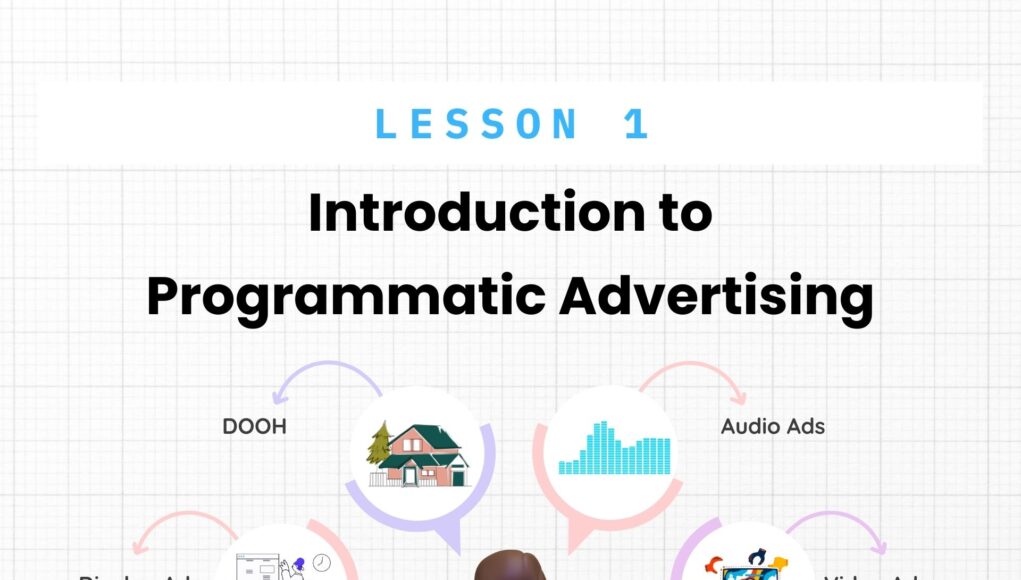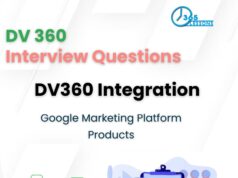The Comprehensive Guide to Programmatic Advertising
In the rapidly evolving digital marketing landscape, programmatic advertising has emerged as a game-changer, offering unprecedented efficiency and precision in ad placement. This comprehensive guide delves into the intricacies of programmatic advertising, from its foundational concepts to the cutting-edge technologies shaping its future. By exploring its benefits, challenges, and best practices, this article aims to provide a thorough understanding of programmatic advertising and its significant role in digital marketing strategies.
Table of Contents
Introduction – What is Programmatic Advertising?
Programmatic advertising represents the automation of the buying and selling of online advertisements, leveraging software and algorithms to purchase display space efficiently. This technology-driven approach has revolutionized the digital marketing landscape by optimizing ad spend and targeting precision, marking a significant departure from traditional manual negotiation and insertion order processes. Initially emerging in the early 2000s, the evolution of programmatic advertising mirrors the digital age’s rapid advancement, with continuous innovations shaping its trajectory.
How Programmatic Advertising Works
Understanding the mechanics of programmatic advertising involves delving into its core components: Demand-Side Platforms (DSPs), Supply-Side Platforms (SSPs), ad exchanges, and Real-Time Bidding (RTB).
- Demand-Side Platforms (DSPs) provide advertisers with a unified interface to manage their ad buying across multiple sources, utilizing data and algorithms to bid on ad space in real time. Advertisers can set specific criteria, such as demographic, geographic, and behavioral targeting, to ensure their ads reach their intended audience.
- Supply-Side Platforms (SSPs) allow publishers to manage and sell their available ad space to the highest bidder. SSPs maximize revenue for publishers by exposing their inventory to a wide range of potential buyers, optimizing the match between available ad space and advertiser demand.
- Ad Exchanges are digital marketplaces that facilitate the buying and selling of ad inventory from multiple ad networks. They provide the platform for DSPs and SSPs to interact, with transactions often occurring through real-time auctions.
- Real-Time Bidding (RTB) is a technology that allows individual ad impressions to be bought and sold on a per-case basis, through a real-time auction that occurs in the milliseconds it takes for a webpage to load. This ensures that advertisers can bid for ad space in real time, targeting specific audiences at the optimal moment.
The process of programmatic ad buying starts when a user visits a webpage, triggering a bid request that includes various data points such as the user’s demographic information, browsing history, and location. This request is then sent to an ad exchange, where an auction takes place. Advertisers use DSPs to automate their bids based on the value of the impression to their specific campaign goals. The winning bid gets the ad slot, and the ad is served to the user—all within milliseconds.
Benefits and Challenges of Programmatic Advertising
Benefits for Advertisers and Publishers
For Advertisers:
- Increased Efficiency and Time Savings: Automation of the ad buying process reduces the need for traditional negotiation and manual insertion orders, significantly saving time and increasing operational efficiency.
- Enhanced Targeting Capabilities: Utilizes rich data insights to target ads more precisely according to demographics, behavior, location, and more, improving campaign performance.
- Improved ROI: Programmatic platforms’ optimization algorithms ensure that advertisers’ budgets are spent on the most valuable inventory, maximizing return on investment.
- Real-Time Insights and Optimization: Offers the ability to monitor campaign performance in real-time, allowing for adjustments and optimizations on the fly to enhance outcomes.
For Publishers:
- Maximized Revenue: Enables publishers to sell their inventory at the best possible price through real-time bidding, ensuring maximum revenue.
- Greater Control Over Inventory: Publishers can set minimum prices and choose which advertisers can buy their space, giving them greater control over their inventory and brand safety.
- Efficient Inventory Management: Automates the sale of ad space, reducing unsold inventory and improving overall yield management.
Challenges Associated with Programmatic Advertising
- Complexity and Transparency Issues: The programmatic ecosystem’s complexity can be daunting, with concerns about transparency in costs, inventory quality, and the actual value being delivered to both advertisers and publishers.
- Ad Fraud and Security Concerns: The automated nature of programmatic advertising makes it susceptible to ad fraud, including non-human traffic and malicious activities, which can inflate costs and undermine campaign effectiveness.
- Privacy and Data Regulation Compliance: With increasing scrutiny and regulation around user data (e.g., GDPR, CCPA), navigating data usage and ensuring compliance pose significant challenges.
- Technology and Integration Costs: Implementing and integrating the necessary platforms and technologies for programmatic advertising can require significant upfront investment and ongoing maintenance costs.
- Skill Gap: The sophistication of programmatic advertising demands specialized knowledge and skills, creating a gap that businesses need to fill to effectively leverage these technologies.
Despite these challenges, the benefits of programmatic advertising often outweigh the drawbacks for many advertisers and publishers. By understanding and navigating these challenges effectively, stakeholders can unlock the full potential of programmatic advertising to achieve their marketing and revenue goals.
Programmatic Advertising Technologies and Platforms
The ecosystem of programmatic advertising is supported by a sophisticated array of technologies and platforms, each playing a crucial role in streamlining the ad buying and selling process. Understanding these components is essential for leveraging programmatic advertising effectively.
Data Management Platforms (DMPs)
DMPs collect, organize, and manage data from various sources, including first-party data (from advertisers’ own channels), second-party data (partner data), and third-party data (external data providers). These platforms enable advertisers to create detailed audience segments, improving targeting by aligning ads with users’ interests, behaviors, and demographics. For publishers, DMPs help understand their audience better, allowing for the optimization of content and advertising strategies.
Ad Servers
Ad Servers are crucial for both publishers and advertisers. They store ad content and deliver it to digital platforms. For advertisers, ad servers track the performance of ads across different platforms, providing insights into impressions, clicks, and conversions. For publishers, ad servers manage the ads to be displayed, ensuring the right ads are shown to the right audience, optimizing fill rates and ad revenues.
Fraud Prevention Tools
In the programmatic advertising landscape, fraud prevention tools are indispensable for safeguarding the integrity of ad campaigns. These tools employ advanced algorithms and real-time monitoring to detect and prevent fraudulent activities, such as fake impressions and clicks generated by bots. By protecting against fraud, these tools ensure advertisers’ budgets are spent on genuine user engagement, thereby improving campaign ROI.
Leading Programmatic Advertising Platforms
- Google’s Display & Video 360 (DV360): Part of Google Marketing Platform, DV360 offers a comprehensive suite of tools for planning, buying, and measuring digital media across screens, enabling sophisticated audience targeting and real-time campaign optimization.
- The Trade Desk: A highly regarded DSP that provides access to a wide range of inventory across various formats and channels. It offers advanced targeting capabilities and real-time bidding, along with detailed analytics for campaign optimization.
- MediaMath: Known for its advanced algorithmic bidding and wide-reaching ad exchange, MediaMath helps advertisers optimize their ad spend across multiple channels, enhancing campaign effectiveness.
These technologies and platforms form the backbone of the programmatic advertising ecosystem, facilitating the efficient and effective transaction of digital ad space. By leveraging these tools, advertisers and publishers can achieve greater control, transparency, and optimization of their advertising efforts.
Programmatic Advertising Strategies and Best Practices
For advertisers and publishers looking to maximize the benefits of programmatic advertising, adopting effective strategies and adhering to best practices is crucial. Here are some key considerations:
- Emphasize Data Quality: Ensure that the data used for targeting and segmentation is accurate and relevant. High-quality data is the foundation of effective programmatic advertising campaigns.
- Prioritize Transparency: Work with platforms and partners that offer transparency in pricing, inventory quality, and data usage. Understanding where your ads are placed and how your budget is allocated is essential for optimizing ROI.
- Implement Advanced Targeting Techniques: Leverage the full spectrum of targeting options available, including contextual, behavioral, demographic, and geographic targeting, to reach your audience more precisely.
- Focus on Creative Optimization: Use dynamic creative optimization (DCO) to tailor ad messages and designs to specific audience segments. Personalized ads can significantly enhance engagement and conversion rates.
- Monitor and Adjust in Real Time: Take advantage of the real-time nature of programmatic advertising to monitor campaign performance and make adjustments as needed. Continuous optimization is key to achieving your advertising objectives.
- Guard Against Fraud: Employ robust fraud prevention measures to protect your campaigns. Working with reputable platforms and using advanced fraud detection tools can help minimize the risk of ad fraud.
- Stay Compliant with Data Regulations: Ensure that your data collection and usage practices comply with all relevant privacy laws and regulations, such as GDPR and CCPA. Respecting user privacy is not only a legal requirement but also builds trust with your audience.
By following these strategies and best practices, advertisers and publishers can navigate the complexities of programmatic advertising more effectively, achieving better outcomes for their campaigns.
Measurement and Analytics in Programmatic Advertising
The real power of programmatic advertising lies not just in its ability to automate ad transactions, but in the comprehensive data it generates, allowing for deep analysis and optimization of campaigns. Measurement and analytics play a pivotal role in understanding campaign performance, identifying opportunities for improvement, and demonstrating ROI.
Importance of Measurement and Analytics
In a landscape as dynamic as digital advertising, the ability to measure campaign effectiveness in real time is invaluable. It enables advertisers to make data-driven decisions, adjusting strategies to enhance performance continuously. For publishers, analytics provide insights into audience behavior and preferences, informing content and monetization strategies.
Key Metrics and KPIs
To evaluate the success of programmatic advertising campaigns, several key metrics and KPIs are commonly used:
- Impressions and Reach: Measures the number of times an ad is viewed and the breadth of the audience that sees it. These metrics provide a basic understanding of campaign scale.
- Click-Through Rate (CTR): The ratio of users who click on an ad to the number of total users who view the ad (impressions). CTR is a primary indicator of ad relevance and engagement.
- Conversion Rate: Tracks the percentage of users who take a desired action after clicking on an ad, such as making a purchase or signing up for a newsletter. This metric is crucial for assessing the effectiveness of an ad in driving outcomes.
- Cost Per Action (CPA): Represents the cost associated with a specific action taken by a user, offering a direct measure of campaign cost efficiency relative to its objectives.
- Return on Ad Spend (ROAS): Calculates the revenue generated for every dollar spent on advertising, providing a clear picture of campaign profitability.
- Viewability: Measures the percentage of ads that are actually viewable by users, ensuring that impressions are meaningful and have the potential to impact the audience.
Leveraging these metrics allows advertisers to optimize campaigns for better performance, adjusting targeting, creative elements, and bidding strategies based on real-time feedback.
Analytics Tools and Platforms
Several analytics tools and platforms are essential for tracking and interpreting programmatic advertising data:
- Google Analytics: Offers comprehensive insights into website traffic and user behavior, allowing advertisers to track conversions and assess how programmatic ads drive site engagement.
- Ad Servers Analytics: Built-in analytics in ad servers enable publishers and advertisers to monitor ad performance directly, including impressions, clicks, and conversions.
- DMP Analytics: Data management platforms not only segment and target audiences but also provide analytics on audience engagement and campaign performance across different segments.
By integrating these tools, advertisers and publishers can gain a holistic view of their programmatic efforts, driving continuous improvement and achieving strategic goals.
The Future of Programmatic Advertising
As we look to the future, programmatic advertising is set to become even more sophisticated, driven by advancements in technology and shifts in consumer behavior. Emerging trends and innovations promise to further enhance the effectiveness and efficiency of programmatic campaigns.
Emerging Trends and Innovations
- Artificial Intelligence (AI) and Machine Learning (ML): AI and ML are revolutionizing programmatic advertising by enabling more intelligent targeting and bidding strategies, predictive analytics for forecasting campaign performance, and dynamic creative optimization tailored to individual user preferences.
- Blockchain Technology: Blockchain holds the potential to increase transparency and reduce fraud in programmatic advertising by providing a secure, transparent ledger for transactions. This could significantly improve trust between advertisers, publishers, and users.
- Privacy-First Advertising: With increasing emphasis on privacy and data protection regulations, programmatic advertising is evolving to prioritize user consent and anonymized data processing, requiring new approaches to targeting and personalization.
- Connected TV (CTV) and Over-The-Top (OTT) Advertising: As viewership shifts from traditional TV to digital platforms, programmatic advertising is expanding into CTV and OTT spaces, offering new opportunities for targeted, interactive ad experiences.
Implications for Businesses
These developments suggest a future where programmatic advertising is more transparent, efficient, and aligned with user privacy concerns. Businesses that stay ahead of these trends, investing in the latest technologies and adapting to regulatory changes, will be well-positioned to leverage programmatic advertising for competitive advantage.
Conclusion
Programmatic advertising represents a significant evolution in digital marketing, offering unprecedented efficiency, precision, and scalability in ad buying and selling. By understanding its workings, benefits, challenges, and best practices, advertisers and publishers can harness its power to achieve their marketing objectives.
As the landscape continues to evolve, staying informed about the latest technologies, trends, and regulatory developments will be crucial for success. The future of programmatic advertising promises even greater possibilities for personalization, engagement, and ROI, making it an indispensable tool in the digital marketer’s arsenal.
This exploration of programmatic advertising has covered its foundational concepts, operational mechanics, strategic considerations, and future directions, providing a comprehensive overview for businesses looking to navigate this dynamic field.








